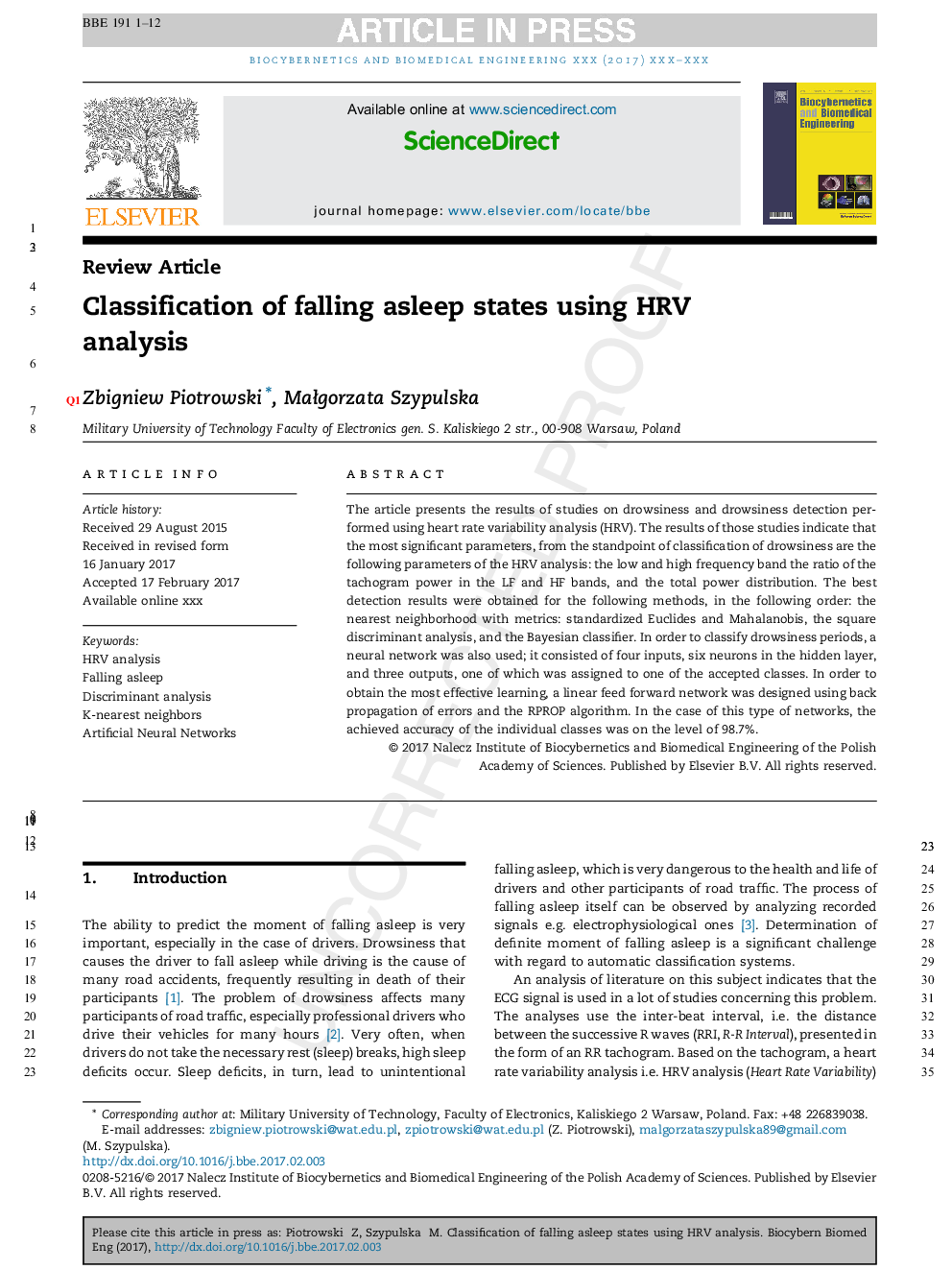| Article ID | Journal | Published Year | Pages | File Type |
|---|---|---|---|---|
| 6484230 | Biocybernetics and Biomedical Engineering | 2017 | 12 Pages |
Abstract
The article presents the results of studies on drowsiness and drowsiness detection performed using heart rate variability analysis (HRV). The results of those studies indicate that the most significant parameters, from the standpoint of classification of drowsiness are the following parameters of the HRV analysis: the low and high frequency band the ratio of the tachogram power in the LF and HF bands, and the total power distribution. The best detection results were obtained for the following methods, in the following order: the nearest neighborhood with metrics: standardized Euclides and Mahalanobis, the square discriminant analysis, and the Bayesian classifier. In order to classify drowsiness periods, a neural network was also used; it consisted of four inputs, six neurons in the hidden layer, and three outputs, one of which was assigned to one of the accepted classes. In order to obtain the most effective learning, a linear feed forward network was designed using back propagation of errors and the RPROP algorithm. In the case of this type of networks, the achieved accuracy of the individual classes was on the level of 98.7%.
Related Topics
Physical Sciences and Engineering
Chemical Engineering
Bioengineering
Authors
Zbigniew Piotrowski, MaÅgorzata Szypulska,
